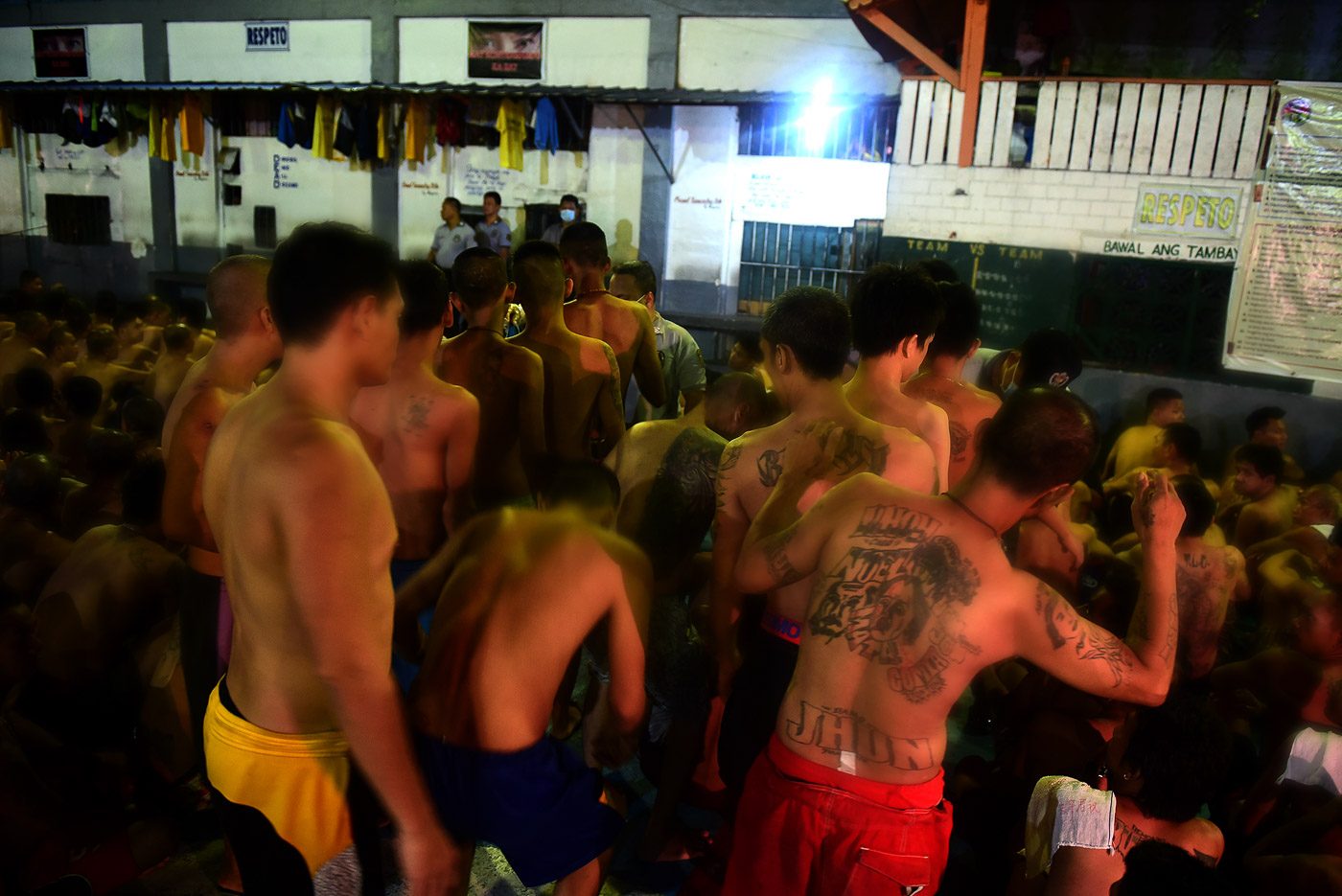SUMMARY
This is AI generated summarization, which may have errors. For context, always refer to the full article.

MANILA, Philippines – Philippine jails have hit a 612% congestion rate, causing many inmates to get sick, and creating a breeding ground for gangs, according to state auditors.
“Congestion in jails leads not only to health and sanitation problems but also to increased gang affiliation of inmates. To sustain survival, inmates hold on to gangs or ‘pangkat’ where they find protection, [a] network of social support, and most important, access to material benefits,” the Commission on Audit (COA) said in its 2017 audit report on the Bureau of Jail Management and Penology (BJMP).
According to COA, jails originally meant to contain only 20,653 are now bursting with 146,302 inmates. This is a 612% congestion rate, up from the 2016 congestion rate of 512% or 126,946 inmates.
COA added that there were 257,587 cases of ailments in 2017, a 34.47% increase from the 191,550 ailments recorded in 2016. (READ: Bursting at the seams: Philippine detention centers)
Inmates were mostly hit by upper respiratory tract infection (57,269 cases), hypertension (45,665), tension type headache (26,507), abscess (23,580), and influenza (22,397).
“The jail populations for the year recorded an increase in various months due to the number of drug-related cases in the country as well as the court’s slow [action] or inaction on the pending cases caused by lack of judges, postponement of hearings, and the slow disposition of criminal cases that carry the penalty of reclusion perpetua or life imprisonment. Detainees who are below poverty line cannot afford to post bail so they were [stuck in jail],” COA said.
Standards
The fastest solution would be to expand the jails, but COA said “lots where some jail buildings were constructed had limited space; hence, construction or expansion horizontally of the said buildings is not possible.”
Philippine standards are not exactly ideal either. The BJMP manual states that the “ideal habitable floor area per inmate” is at 4.7 square meters, or about half of a parking space for a car.
Even then, this minimum standard has not been met, and far from complying with the requirement of the United Nations Minimum Standard Rules for the Treatment of Prisoners which provides for “minimum floor space, lighting, heating, and ventilation” for inmates.
COA recommended the following:
- Prioritize additional jail buildings, or additional services for the most congested cells to “ensure that the human rights and welfare of inmates are upheld at all times.”
- Scout for possible local government donations for construction of more jails.
- Accelerate the implementation of the Paralegal Program for speedy disposition of cases.
- Enhance the Good Conduct Time Allowance (GCTA) process to release detainees ahead of completion of their sentence.
The BJMP management told COA there are 31 ongoing jail construction projects and 21 more being bidded out. – Rappler.com
Add a comment
How does this make you feel?
There are no comments yet. Add your comment to start the conversation.